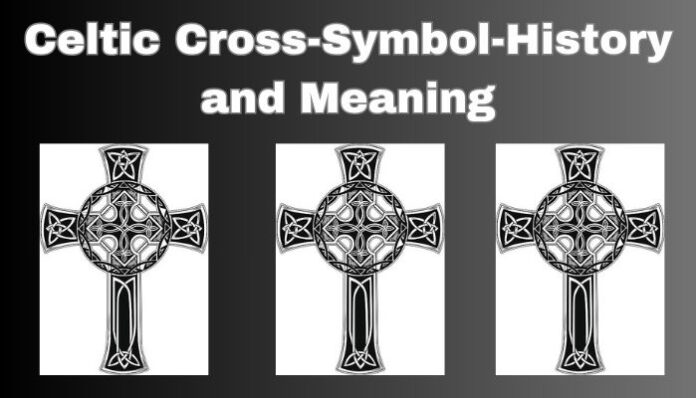For years, people have been intrigued by the Celtic Cross, an ancient symbol rich in history and symbolism. In this article, we will discuss the Celtic Cross, its historical origins, deep symbolism, and where you might locate these mystic symbols today.
OTHER NAMES: Odin’s Cross, Sun Cross, and Wheel Cross

One of the most important and often used white supremacist symbols is the white supremacist variant of the Celtic Cross, which consists of a square cross interlocking with or encircled by a circle. Although white nationalists refer to it as a Celtic Cross, its origins can be traced back to the pre-Christian “sun cross” or “wheel cross” of ancient Europe. In the 1930s and 1940s, Norwegian Nazis adopted a variation of the sign. Following WWII, the insignia was adopted by a number of white nationalist parties and movements. Today, neo-Nazis, racist skinheads, Ku Klux Klan members, and almost every other form of white supremacist use this version of the Celtic Cross. It has also gained prominence as part of the logo of Stormfront, the world’s oldest and largest white nationalist website.
The Celtic Cross, as it is commonly shown, is a historic Christian symbol that is used for religious purposes as well as to represent themes such as Irish pride. As such, it is a widely used emblem, primarily by non-extremists. Most versions of the traditional Celtic Cross have an elongated vertical axis (sometimes accompanied by Celtic knotwork) similar to other Christian crosses. Although white supremacists may use this variant of the Celtic Cross on occasion, the vast majority of its use is non-extremist and, in the absence of other hate symbols, does not imply white supremacy or racism.
The Roots of the Celtic Cross

The Celtic Cross originated in the early Middle Ages in the British Isles, mainly Ireland and Scotland, and its design combines the Christian cross with a circle, symbolizing the unity of the divine and the perpetual cycle of life, death, and rebirth.
Early Christian Significance
The Celtic Cross initially used by the early Christians, the Celtic Cross represents Christ’s triumph over death. The circle embodies God’s endless love, making it a powerful emblem of faith and eternity.
Celtic Pagan Influence
The Celtic Cross before its Christian association, the cross was a significant symbol in Celtic paganism. It is believed to have represented the four elements: earth, air, fire, and water, embodying the Celtic worldview and their deep connection with nature.
Evolution of the Symbol
The Celtic Cross over the centuries, the Celtic Cross has undergone various interpretations. In medieval times, it became a mark of gravestones, signifying a soul’s journey into the afterlife. Today, it’s a popular choice for tattoos, jewelry, and artwork, blending ancient traditions with modern aesthetics.
Unraveling the Symbolism
The intersecting lines of the Celtic Cross symbolize the harmonious union of opposites, such as male and female, life and death, and earthly and divine. Its intricate patterns often hide deeper meanings, inviting contemplation and introspection.
Where to Discover Celtic Crosses Today
Historic Churches and Monasteries
Visit ancient churches and monasteries in Ireland and Scotland, where you’ll find beautifully adorned Celtic Crosses, each telling a unique story.
Graveyards and Tombstones
Explore old graveyards, especially in Celtic regions, where the Celtic Cross has been a common motif for centuries. These hallowed grounds are a testament to the enduring symbolism of the cross.
Artisanal Stores and Online Shops
Numerous artisanal stores and online platforms offer Celtic Cross jewelry and artifacts. Owning one can connect you to the symbolism and heritage associated with this ancient emblem.
Conclusion
In conclusion, the Celtic Cross stands as a timeless symbol, bridging the gap between ancient traditions and contemporary interpretations. Its profound meanings, rooted in both Christianity and Celtic paganism, continue to inspire and intrigue people worldwide.
Frequently Asked Questions
Q1: What is the origin of the Celtic Cross?
The Celtic Cross originated in the early Middle Ages in the British Isles, particularly in Ireland and Scotland.
Q2: What does the circle in the Celtic Cross symbolize?
The circle in the Celtic Cross represents the unity of the divine and the eternal cycle of life, death, and rebirth.
Q3: Can I find Celtic Crosses outside of Ireland and Scotland?
Yes, Celtic Crosses can be found globally, especially in areas with a strong Irish or Scottish heritage. You can also find them in artisanal stores and online shops.
Q4: What materials are used to create Celtic Cross jewelry?
Celtic Cross jewelry can be made from various materials, including silver, gold, bronze, and even wood, catering to different preferences and budgets.
Q5: Is the Celtic Cross still used in Christian religious contexts today?
Yes, the Celtic Cross is still used in Christian religious contexts, especially in churches and religious artworks, symbolizing Christ’s triumph over death.







